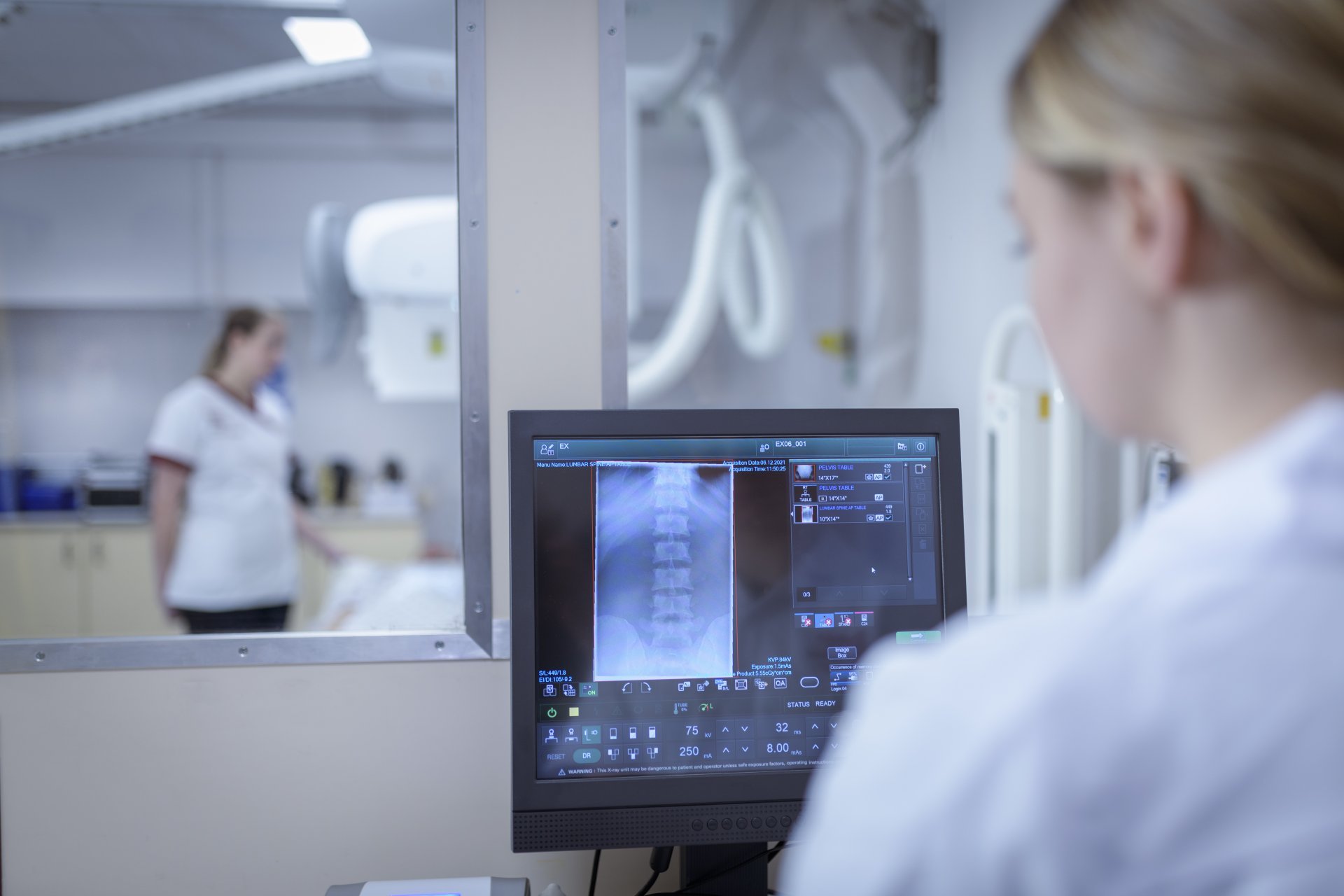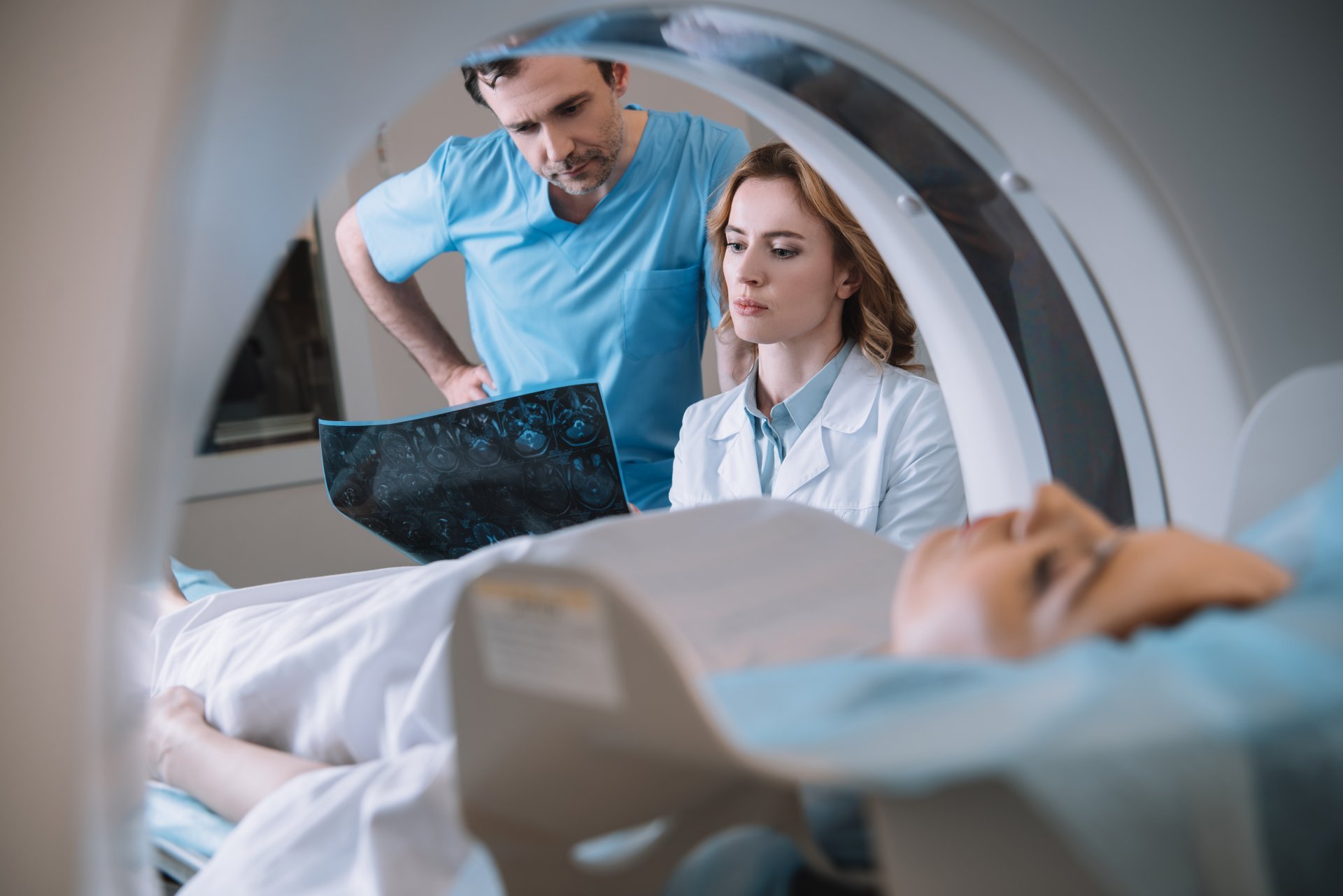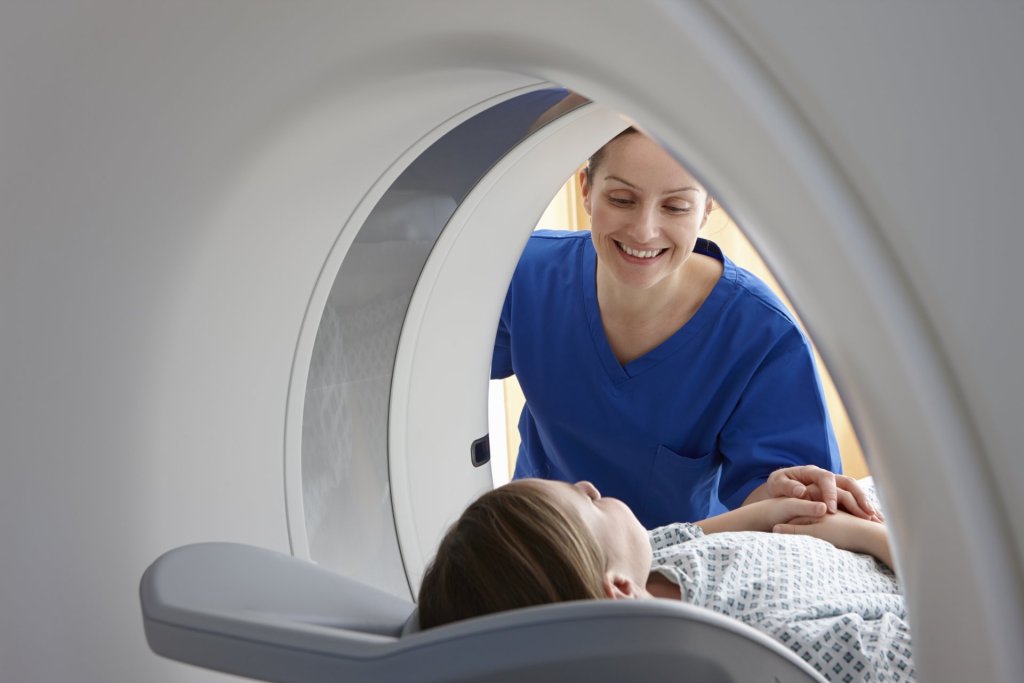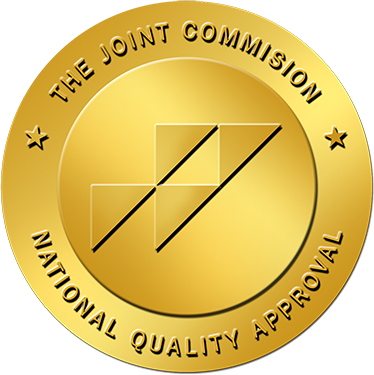MRI (Magnetic Resonance Imaging) and CT (Computed Tomography) technologists are both specialized medical imaging professionals, but they operate different types of equipment and have distinct roles. Since they work in similar parts of a hospital, and may even overlap responsibilities, those interested in becoming allied imaging professionals should understand the difference between the two roles.
In this article, we’ll explore the unique duties and responsibilities of MRI and CT techs, how to become an MRI or a CT tech, and see how the two professions differ from each other.
Responsibilities and technology
While both MRI and CT techs use digital imaging equipment to produce scans of a patient’s body, the actual technology used and images produced are quite dissimilar. An MRI machine uses a powerful magnetic field that generates detailed images of organs, tissues, and the nervous system. Crucially, no radiation is involved in the MRI imaging process.
CT and CAT scans use X-ray technology and computer processing to create cross-sectional images of the body. These scans do involve exposure to ionizing radiation, a key difference between CT and MRI technology. While MRI machines can take as long as 90 minutes to produce a scan, CT scans can be completed much faster, often taking just a few minutes.
Since MRIs take much longer, MRI techs should possess the necessary soft skills to help patients relax and endure long periods of time in a cramped machine. CT scans are often used for traumatic injuries, so CT techs must be highly skilled in dealing with traumatized patients.

Image quality and purpose
MRI machines produce highly detailed images of soft tissues, the brain, the spinal cord, and the joints. As such, MRI scans are often used to observe the body’s neurological, musculoskeletal, and vascular systems.
On the other hand, CT scans can be used to check a patient’s bones, often in high-trauma situations. They are also used to scan the lungs and organs for cancer and internal bleeding.
Education and certification
MRI and CT techs both begin their careers with a degree in radiologic technology. They then pick one of the two areas in which to specialize. Certification in both specialties is offered through the American Registry of Radiologic Technologists (ARRT).
Associate degrees in the radiologic technology field are common. According to a 2022 report from the American Society of Radiologic Technologists (ASRT), 61% of radiation therapy, nuclear medicine technology, and radiologic technology programs offer associate degrees. These programs typically take two years to complete.
Can a CT tech become an MRI tech and vice versa?
Yes, a CT technologist can become an MRI technologist and vice versa with additional training and certification. Many radiologic technologists cross-train in both modalities to expand their career opportunities.
How a CT tech can become an MRI tech
- Education & Training:
- If already a certified radiologic technologist (RT), you can complete an MRI training program (on-the-job training or formal coursework).
- Some hospitals offer cross-training programs for techs already working in radiology.
- Clinical Experience:
- Gain hands-on experience under supervision in MRI procedures.
- Some facilities allow CT techs to train in MRI while still working.
- Certification:
- Obtain MRI certification through the ARRT by meeting clinical requirements and passing the MRI exam.
How an MRI tech can become a CT tech
- Training in CT:
- If you are an MRI tech with a radiologic technology background, you may need additional coursework or on-the-job training in CT scanning.
- Clinical Experience:
- Work under supervision in a CT department to fulfill clinical case requirements.
- Certification:
- Take the ARRT CT certification exam after completing required clinical cases.

Can I become both an MRI and CT tech?
Yes! While some technologists specialize in just one modality, others are trained in both MRI and CT to expand their job opportunities. It is common for imaging technologists to work in both CT and MRI, especially in smaller hospitals, outpatient centers, and rural healthcare settings where staffing is more flexible. Many employers prefer multi-modality technologists because they can cover more shifts and adapt to different imaging needs.
Some factors to consider before pursuing both MRI and CT certification:
- Some employers support cross-training and may even provide financial assistance.
- If you are already ARRT-certified in radiography, switching is easier.
- If you are MRI-only certified, transitioning to CT may require extra radiography coursework.
Cross-training can improve job security, salary potential, and flexibility in work settings. Many imaging techs choose to become dual-certified to increase their career opportunities.
Factors that influence doing both CT and MRI work
Facility size and staffing needs:
- Smaller hospitals & clinics often require techs to be cross-trained in CT and MRI.
- Larger hospitals may have dedicated MRI and CT teams, but cross-training is still valued.
Work schedules and rotations:
- Some technologists work part-time in both modalities or rotate between shifts.
- Others may be primary in one (e.g., MRI) but fill in for CT when needed.
Certification and experience:
- Many technologists hold dual certification (ARRT in CT and MRI) to increase job flexibility.
- Employers may offer on-the-job cross-training to help techs learn both skills.
Career growth and salary:
- Being proficient in both CT and MRI can lead to higher pay and better job security.
- Some roles, like lead imaging technologist or multimodality technologist, specifically require experience in both.
Challenges of doing both MRI and CT work
- Different Workflow & Equipment: Switching between CT and MRI requires adjusting to different scan times and procedures.
- Knowledge Depth vs. Breadth: Focusing on both may limit specialization in either modality.
- Workload Balance: Some find it overwhelming to juggle both roles, especially in high-volume facilities.
How much do MRI and CT techs make?
According to Indeed, MRI and CT techs make about the same amount per week: $2,434 for MRI techs, and $2,436 for CT techs. Those amounts can vary based on facility, experience, and whether you take a contract or staff position. Facilities in urban and suburban areas tend to pay more than rural ones, in accordance with the cost of living and other factors.

Jump-start your rad tech career with Prolink
At Prolink, we offer the top rad tech jobs in facilities around the country. Whether you’re looking for a travel, local contract, or permanent role, our expert team of recruiters can find you the perfect job with the pay and benefits package you’re looking for.
We do so much more than just find you jobs, however. Our recruiters get to know your needs, goals, and lifestyle and provide you with the perfect position to match. They stay in touch and keep tabs once you start, so you never feel alone, even on the road in a travel role. If you’re ready to find your next rad tech position, click below to explore our available jobs or connect with a recruiter today.









